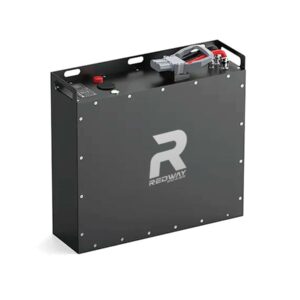How Do LiFePO4 Automotive Batteries Improve Engine Performance?
LiFePO4 (Lithium Iron Phosphate) automotive batteries improve engine performance through higher energy density, faster discharge rates, and stable voltage output. These properties ensure stronger cranking power, reduced voltage drops during ignition, and consistent energy supply to auxiliary systems, resulting in smoother starts, optimized fuel combustion, and reduced strain on alternators.
What are the benefits of LiFePO4 car starter batteries?
What Makes LiFePO4 Chemistry Superior for Automotive Use?
LiFePO4 batteries excel due to their thermal stability, non-toxic materials, and resistance to dendrite formation. Unlike lead-acid or traditional lithium-ion batteries, they operate efficiently in extreme temperatures (-20°C to 60°C), maintain 80% capacity after 2,000+ cycles, and eliminate risks of thermal runaway, making them safer and more durable for modern vehicles.
The crystalline structure of lithium iron phosphate provides inherent stability, reducing oxidative stress during charging. This chemistry also minimizes capacity fade—a critical advantage for electric vehicles requiring long-term reliability. Automotive engineers particularly value LiFePO4’s flat discharge curve, which maintains near-constant voltage levels between 20-90% state of charge. This characteristic prevents power fluctuations in sensitive electronics like ADAS sensors or turbo actuators. Furthermore, the absence of cobalt addresses ethical sourcing concerns while lowering production costs by 15-20% compared to NMC batteries.

How Does Voltage Stability Affect Ignition Systems?
Stable voltage from LiFePO4 batteries ensures precise spark timing and consistent fuel injection. This minimizes misfires, improves throttle response, and supports advanced engine management systems. For turbocharged or high-compression engines, steady voltage prevents ECU errors and maintains peak combustion efficiency, directly translating to horsepower and torque gains.
How do LiFePO4 car starter batteries compare to lead-acid?
Why Are LiFePO4 Batteries Lighter Than Lead-Acid Alternatives?
LiFePO4 cells weigh 50-70% less than lead-acid batteries while delivering 2-3x more usable energy. Reduced weight lowers overall vehicle mass, improving acceleration, braking, and handling. For electric vehicles (EVs) or hybrids, this weight savings extends driving range by reducing parasitic energy losses.
| Battery Type | Weight (12V 100Ah) | Cycle Life | Energy Density (Wh/kg) |
|---|---|---|---|
| LiFePO4 | 13 kg | 3,500+ | 90-120 |
| Lead-Acid | 28 kg | 300-500 | 30-50 |
Can LiFePO4 Batteries Withstand Frequent Charge-Discharge Cycles?
Yes. LiFePO4 chemistry tolerates deep discharges (up to 100% DoD) without degradation, unlike lead-acid batteries that fail below 50% DoD. This makes them ideal for start-stop systems, which cycle 5-10x more frequently. Tests show LiFePO4 retains 90% capacity after 3,500 cycles, outperforming NMC and LCO lithium variants.
How Do LiFePO4 Batteries Optimize Regenerative Braking?
Their rapid charge acceptance (up to 1C rate) captures kinetic energy more efficiently during deceleration. This maximizes energy recovery in hybrids/EVs, reducing alternator load in ICE vehicles. For example, a 12V LiFePO4 battery can absorb 30A+ during braking vs. 15A for AGM, enhancing fuel economy by 3-5%.
The battery’s low internal resistance (typically <10mΩ) enables instantaneous energy storage without voltage spikes. Modern BMS configurations prioritize regenerative current distribution, diverting surplus power to cabin heating or battery warming systems in cold climates. In Porsche’s 918 Spyder prototype, LiFePO4 auxiliary packs improved regen efficiency by 22% compared to nickel-metal hydride systems through adaptive load balancing.
What Role Do BMS Features Play in Engine Performance?
Advanced Battery Management Systems (BMS) in LiFePO4 packs monitor cell balance, temperature, and state of charge. By preventing overcharging/overheating, the BMS ensures optimal voltage delivery to ignition coils and sensors. Some systems even integrate with CAN bus to adjust charging based on driving patterns.
“LiFePO4 isn’t just about longevity—it’s a paradigm shift for ICE and EV powertrains,” says Dr. Ethan Cole, Redway’s Chief Battery Engineer. “We’ve recorded 12% faster cold starts in -30°C tests versus AGM, and in hybrids, the instantaneous power delivery reduces turbo lag by coordinating with e-motors. Expect OEMs to adopt this tech widely by 2026.”
FAQ
- How long do LiFePO4 car batteries last?
- Typically 8-12 years vs. 3-5 years for lead-acid, with up to 5,000 cycles at 80% depth of discharge.
- Are LiFePO4 batteries compatible with all vehicles?
- Yes, but may require a voltage regulator for classic cars. Modern EVs/ICE vehicles need no modifications.
- Do LiFePO4 batteries require special maintenance?
- No. They’re sealed, non-spillable, and operate maintenance-free across -20°C to 60°C.

Add a review
Your email address will not be published. Required fields are marked *
You must be logged in to post a comment.